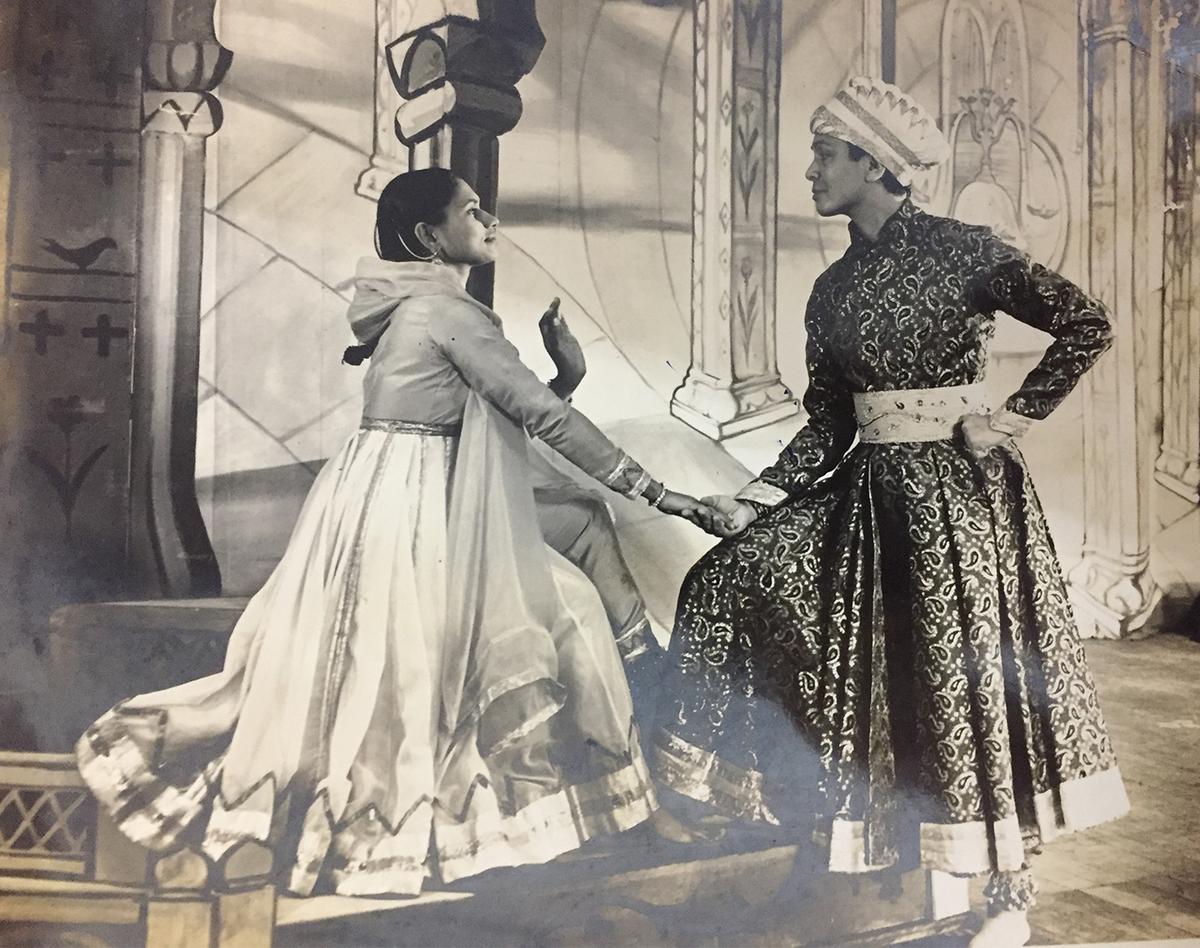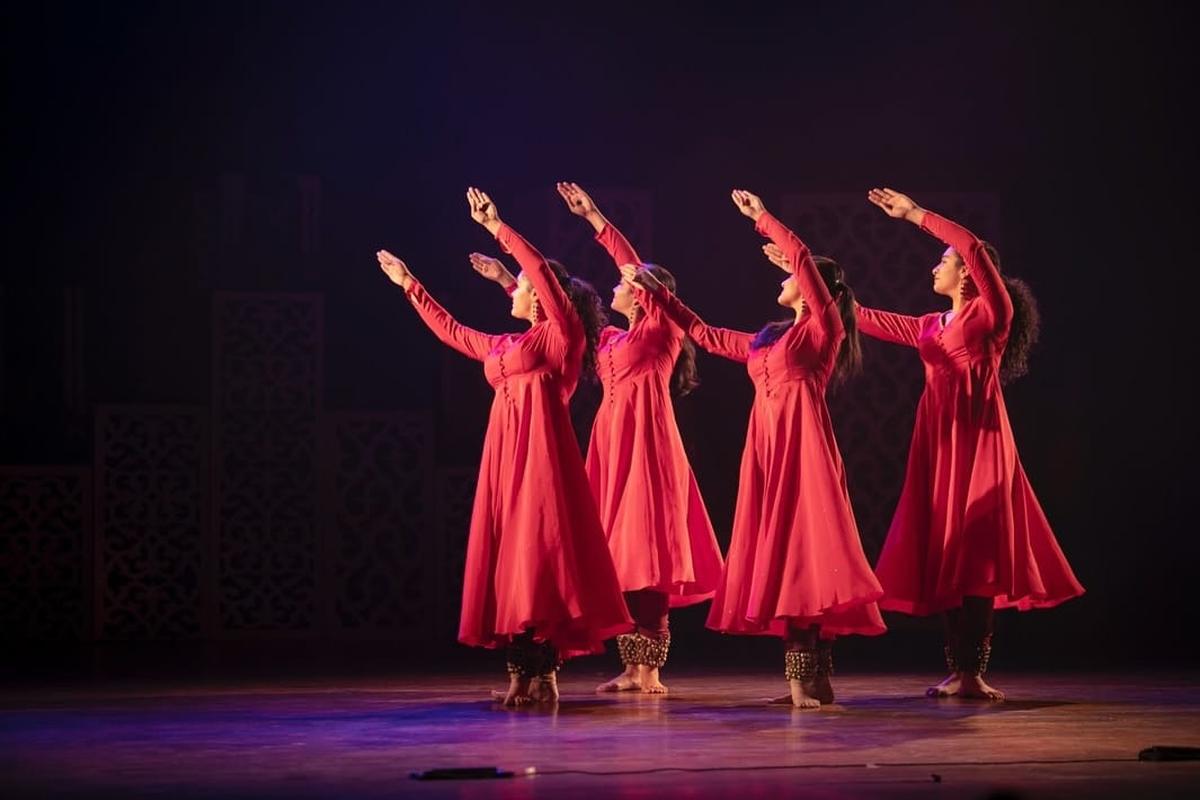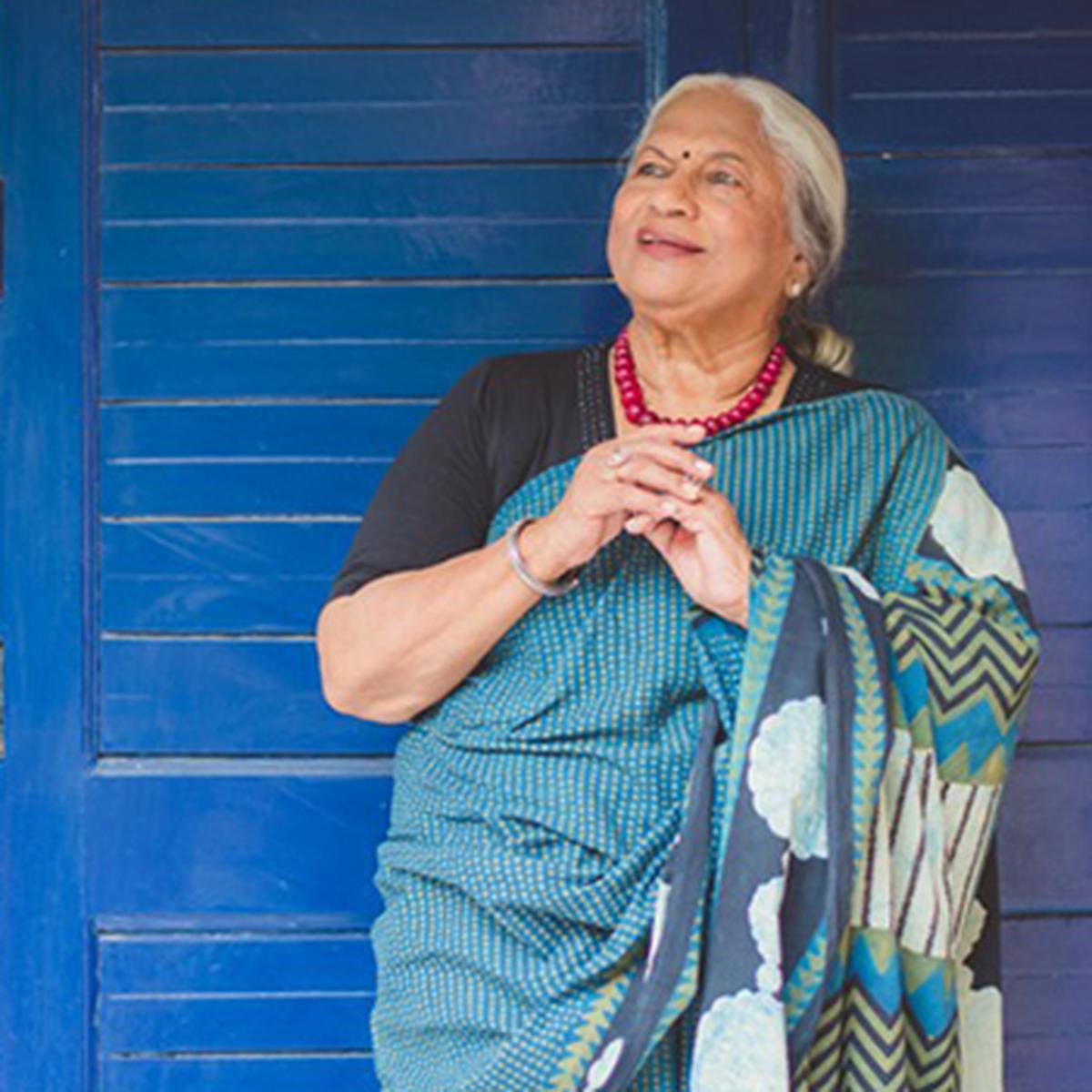
Kumudini Lakhia
| Photo Credit: Courtesy: Kadamb
When you looked at Kumudini Lakhia’s gentle, modest and cheerful persona, you could have hardly imagined she was a woman with immense inner strength and a steely resolve. After all, she fought the patriarchal setup in the Kathak world in her own quiet way, and encouraged many young girls to pursue dance on their terms. And this was about 60 years ago, when the masters’ diktat couldn’t be defied. She designed a distinct choreographic vocabulary to free the dance form of its restrictive repertoire and regressive narratives. Her works, with their contemporary sensibility, drew the world’s attention. Her biggest contribution to dance is transforming the conventional image of a woman performer — from an unquestioning to a thinking artiste.
Kumudini Lakhia passed away on Saturday morning at her residence in Ahmedabad. She was 95. The funeral took place on Saturday afternoon. A prayer meeting will be held on April 15 (9 a.m.) at Sindhu Bhavan, Bodakdev, Ahmedabad.

Kumudini and Ram Gopal
| Photo Credit:
Courtesy: Kadamb
The celebrated artiste was conferred with the Padma Vibhushan on Republic Day this year in recognition of her lifelong dedication to Kathak. She was awarded the Padma Shri in 1987 and the Padma Bhushan in 2010, along with several other prestigious honours.
From teaching in a small space in her husband’s automobile shop to starting her school Kadamb in 1965, Kumudini (Kumiben to her students and admirers) was happier being a teacher than a performer. During conversations, she devoted much of the time talking about her students and how she does not want them to merely replicate her ideas.
Says Rupanshi Kashyap, one of her senior students, “Kadamb has been a home away from home. A hands-on guru, Kumiben was always available for us. Her training method was unique, she wanted us to develop a personal equation with the art. She was delighted when we came up with our inputs to her productions.”

Kumudini Lakhia’s students performing one of her popular works ‘Atah Kim’ in New Delhi.
| Photo Credit:
Courtesy: Kadamb
During an interview with The Hindu, Kumudini once said, “I hate slavish obedience. My students should never hesitate to question — that is the only way to make learning and teaching exciting.”
Bengaluru-based dancer couple Nirupama and Rajendra, in a Facebook post, highlighted how a teacher can leave a lasting impact on her students. “During the last week of February, we visited her. When we told her that her art, her legacy continues here in the south through many youngsters learning and performing her compositions, her technique, she held our hands tight and kissed. Her eyes were moist. She proudly mentioned those students’ names who were all doing good work in various cities and different parts of the world. It was great to see Kummiben brimming with pride and she said — “I don’t just teach dance, I create dancers,” it read.

Pandit Birju Maharaj presenting the ‘Pandit Achhan Maharaj Kalajyoti Award’ to Kumudini Lakhia at Kamani Auditorium in New Delhi on March 10, 2008.
| Photo Credit:
S. Subramanium
Exposed to the life and works of dancers ahead of their time, Kumudini, despite her training in traditional Kathak, travelled to London to join the pioneering Ram Gopal, who put Indian dance on the global culture map. He introduced her to a broader definition of dance — beyond the body. “When touring with him I realised choreography is not just about well-conceptualised movements, it’s also about well-coordinated lighting, costume, makeup and music,” she had explained.
These associations and travels served as a catalyst in her constant search for new material. Though as a soloist, Kumudini blazed through the classical idiom with enormous success. Her hunger for challenges led her to adopt an unconventional approach and style. She came up with abstract themes, which stood out for their ballet-like jumps and glides. The pared-down costume and accessories gave her group works a contemporary feel while the music retained an Indian classical flavour.

Kumudini Lakhia was known for her distinct style
| Photo Credit:
Courtesy: Kadamb
“I did what I did not because I wanted to be called an experimentalist or an innovator. When you are constantly living with the art, it begins to mirror your thoughts and emotions. So I see myself in Kathak and my dance is what I am,” she had said.
Published – April 12, 2025 09:29 pm IST
